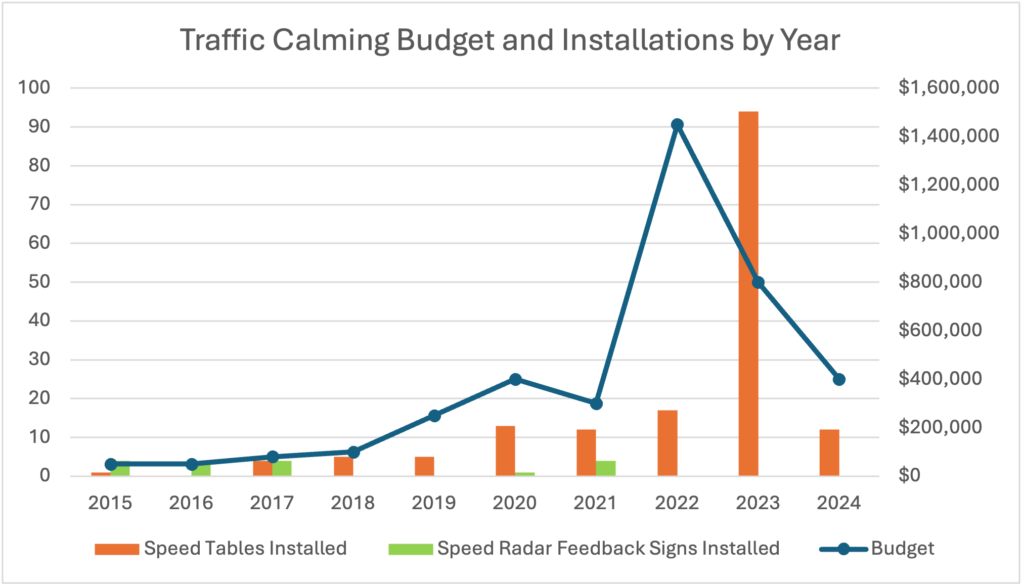Overview and Plan
Traffic calming involves the creation of physical and visual cues to reduce speeding and make streets safer for all users. Since 2015, the City has piloted traffic calming measures using temporary materials and also implemented a select number of permanent solutions in neighborhoods, such as speed humps, radar speed signs and speed limit signs.
Due to the number of traffic calming requests, a scoring and ranking system is used to prioritize projects. The scoring process is based on a number of criteria including traffic volume and crash data. The highest scoring projects in each council district will be accommodated first depending on the availability of funding.
A comprehensive dashboard is under development that will show priority scores, ranks, and statuses for all requests, as well as traffic calming projects that have been completed.
Upcoming Projects
The City plans to install two speed humps in 2025 on the following streets:
- 36th Street between Mishawaka Avenue and Hastings Street
- Clayton Drive between Miami Street and York Road
- Howard Street between St. Louis Boulevard and Stanfield Street
- Huey Street between Elwood Avenue and Humboldt Street
- LaSalle Avenue between Chapin Street and LaPorte Avenue
- Meade Street between Dunham and Monroe Streets
History of Traffic Calming in South Bend

*2023 Installations used a combination of 2022 and 2023 funding
** 2024 Installations will be completed in 2025
Our Strategy + Toolkit
Funding for traffic calming is prioritized towards projects in neighborhoods and corridors with the greatest need guided by the following principles:
Guiding Principles
There are three guiding principles shaping the City’s approach to traffic calming:
1. Aim for Vision Zero. Model a Vision Zero global strategy to eliminate all traffic fatalities and severe injuries, while increasing safe, healthy, equitable mobility for all. No loss of life on streets in South Bend is acceptable. Vision Zero recognizes that people make mistakes, and that these mistakes should not be fatal.
2. Be data driven. Understand street context such as lane widths, presence of sidewalks and bike lanes, traffic control devices or proximity to schools. Review data on crashes and speeding to prioritize investment.
3. Be transparent. Aim to be transparent with residents, sharing plans for traffic calming proactively. This includes the methodology behind decisions to prioritize certain streets and the crash summary dashboard for residents to monitor the City’s data on reducing preventable traffic fatalities and severe injuries over time.
